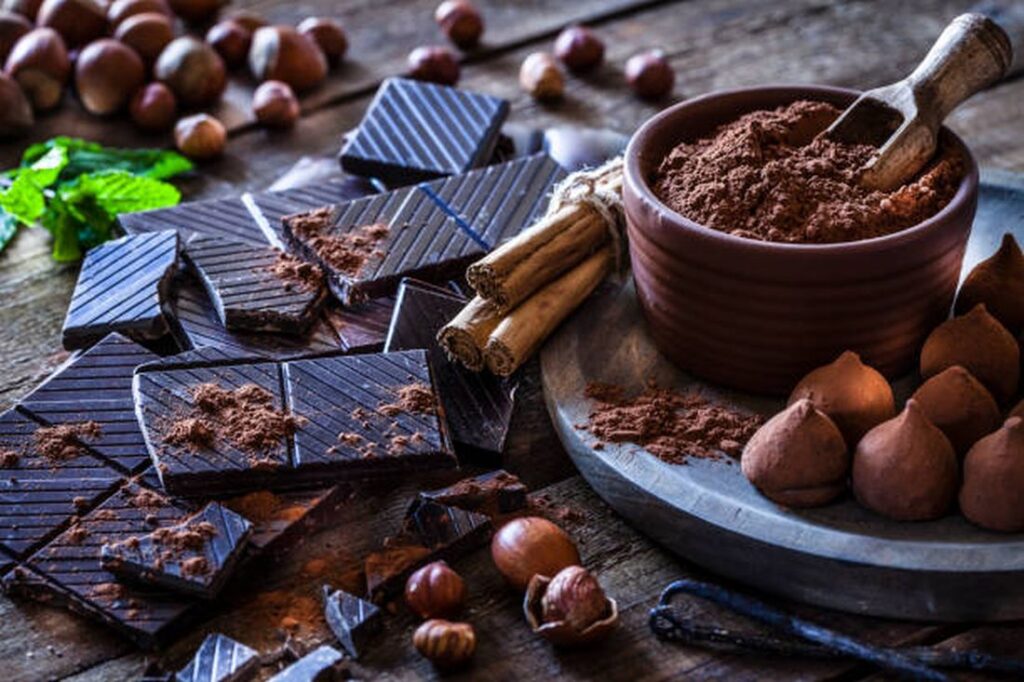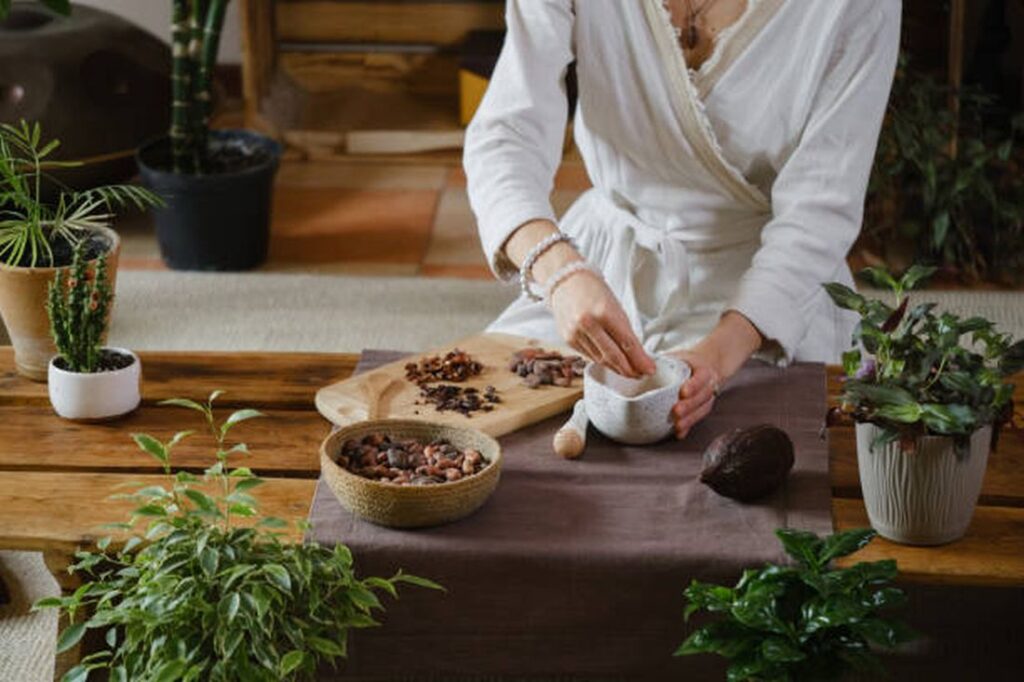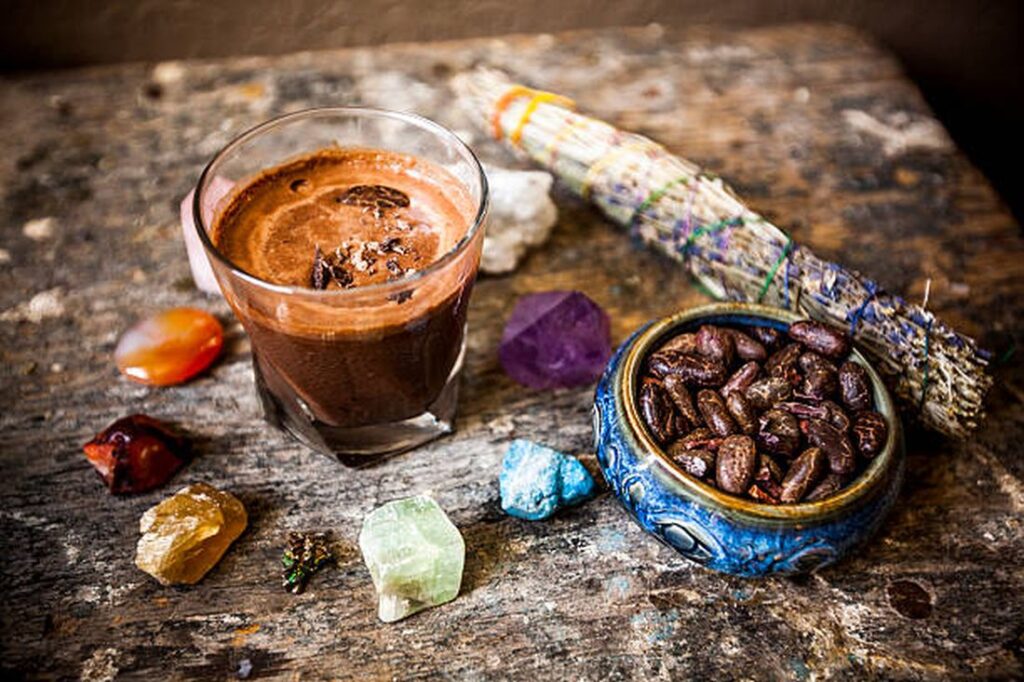With all that has transpired around the globe over the last two years, there has never been a greater need for happy moments of self-reflection and relaxation. And what could be better than combining spirituality with the most delectable dish of all?
Cacao ceremonies come into play here: cacao is utilized as a means to connect with people, replenish the soul, and look inward to cure any repressed emotions throughout these rituals.
Cacao is meticulously produced as an invigorating and healthful beverage to be appreciated, shared, and enjoyed. Cacao ceremonies can take place in a variety of venues, including specialized retreats in the forest, yoga studios, or even at home as part of a regular practice
Good people with a shared objective, attention, silence, and superb cacao, to begin with, are the essentials to a wonderful cacao ceremony!
Cacao ceremonies, like any other spiritual practices, are frequently the source of curiosity, skepticism, and questions. Many chocolate lovers are still perplexed as to what ceremonial cacao is and how it differs from conventional bean-to-bar hot chocolate.
Ceremonial cacao is more than simply a chocolate drink; it is a 100 percent organic heritage drink that has been used in ritual settings for millennia. A Cacao Ceremony is part of a ritual, culture, tradition, and a method to reconnect with Mesoamerican civilizations such as the Aztec and Maya. Cacao that has been ceremonially prepared can help you connect with the deepest depths of your heart. Cacao expands the heart and heightens awareness of the physical world around us.
If you’re unfamiliar with the phrases cacao ceremony and ceremonial cacao, or if you want to learn more about Ceremonial Cacao, its benefits, and how to utilize it, keep reading. This article includes all of the necessary information on ceremonial cacao, how it is manufactured, and the numerous health advantages of cacao.
Let us discover it…
Ingredients and Methods of Preparation

Hot chocolate can be made in three ways in the bean-to-bar world: with cocoa powder, with hot cocoa mixes, or with dark chocolate.
Ceremonial cacao does not use any of the procedures outlined above. The major goal of this beverage is to keep cacao in its most natural condition, maintaining all of the valuable nutrients that it has to offer.
As a result, the process is kept simple, light, and brief: the dried and fermented cocoa beans are roasted at the lowest possible temperature; the husks are scraped from the nibs, and the cocoa nibs are refined/ground into a paste. The paste is then loosely molded into a block prepared for ceremonial cacao usage. The block is similar to conventional 100 percent cacao chocolate, except it has neither tempering nor conching.
Not only is the base component for the cocoa beverage different from conventional hot chocolate, but so is the processing of ceremonial cacao.
Conventional hot chocolate is typically made by heating milk, water, or a plant-based beverage in a pot on the stove and then incorporating cocoa powder, dark chocolate, or hot cocoa mix, along with a sweetener and optional spices, until all of the ingredients are well combined and the preferred texture is obtained.
Rather, ceremonial cacao practitioners opt to use a blender. The 100% cacao block is first sliced into fine shavings. These are combined with the earlier heated chosen liquid in the blender.
Because one of the goals of ceremonial cacao is wellness for the mind and body, certain spices like cardamom, ginger, and cayenne pepper, as well as superfoods like turmeric and maca powder, will be added based on the intended result for the ceremony. For the same reason, sweeteners such as agave, dates, coconut sugar, or maple syrup will likely be more holistic, avoiding all types of highly processed sugars. Authentic ceremonial cacao is also organic, vegan, and fairly traded.
Flavor and consistency

Although bean-to-bar hot chocolate is known for its richness, creaminess, and smoothness, ceremonial cacao has a completely different feel. The viscosity of ceremonial cacao is rich, gritty, and thick due to the less refined initial raw material and the addition of various spices and powders.
Advocates of ceremonial cacao simply enjoy this gritty consistency since it reminds them of old Aztec and Mayan drinks rather than contemporary European hot chocolates.
The taste of ceremonial cacao varies greatly depending on the cacao origin and procedure, as well as all of the additional additives.
Use and Purpose

Standard bean-to-bar hot chocolate is sometimes seen as a sumptuous pleasure. A cup of hot chocolate is eaten somewhat like a cup of hot tea to complement a break in an energizing morning or afternoon, whether it is kept simple with simple water and a sweetener or loaded with spices and creams.
Even normal hot chocolate may be used for self-reflection, ceremonial cacao has deeper meanings. Ceremonial cacao is used for a variety of purposes, including healing, meditation, connecting with others or oneself, awareness, and celebration. As a result, this time is frequently accompanied by prayers, yoga, chanting, particular rituals, and/or silence.
If a mug of hot chocolate may be savored while working on a computer or reading a book, ceremonial cacao is supposed to be consumed with complete attention and focus until the last drop.
To summarize, ceremonial cacao is less processed than standard 100 percent dark chocolate, has more cocoa butter than conventional cocoa powder and is not pre-blended with sugar and other spices, as hot cocoa mixes are.
Nevertheless, it is always a good idea to perform more research on every brand of ceremonial cacao to ensure that they are providing a natural product as they promise.
The most essential component, apart from the cacao beverage itself, is to create a ritual out of cacao, honoring the food of the Gods while we enjoy a time of attention, awareness, and self-reflection.
How to recognize Ceremonial Grade Cacao

- It must not be alkalized throughout the manufacturing process.
- It must not be Dutch-processed.
- It must be made entirely with cacao, with no further additives or ingredients.
Do you require 100% organic cacao for a private ceremony? +Cacao’s official website can be found at https://pluscacao.com/.
